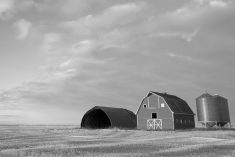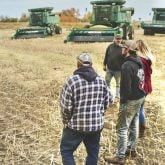On the surface, the news isn’t great for farmers looking to expand. Everywhere you look, it’s a seller’s market. The law of supply-demand is working against you, with multiple bidders on practically every property.
Technology seems like it’s against you too. Check out our accompanying story “New ways to buy and sell farmland”. The days of word-of-mouth are gone. In this digital world, it’s easier than ever for sellers to know exactly what their land is worth, which means they also know precisely how much they stand to lose if, instead of going after bigger markets, they offer a deal to the neighbour who has always helped out in a pinch. All of a sudden that looks so much more costly.
But one thing hasn’t changed. The answer to any real estate question always depends on location and on productive potential, which is why it’s good that Canada is a big country. If you’re prepared to travel farther afield, and to be realistic about goals and expected returns, there still might be some opportunities.
Read Also
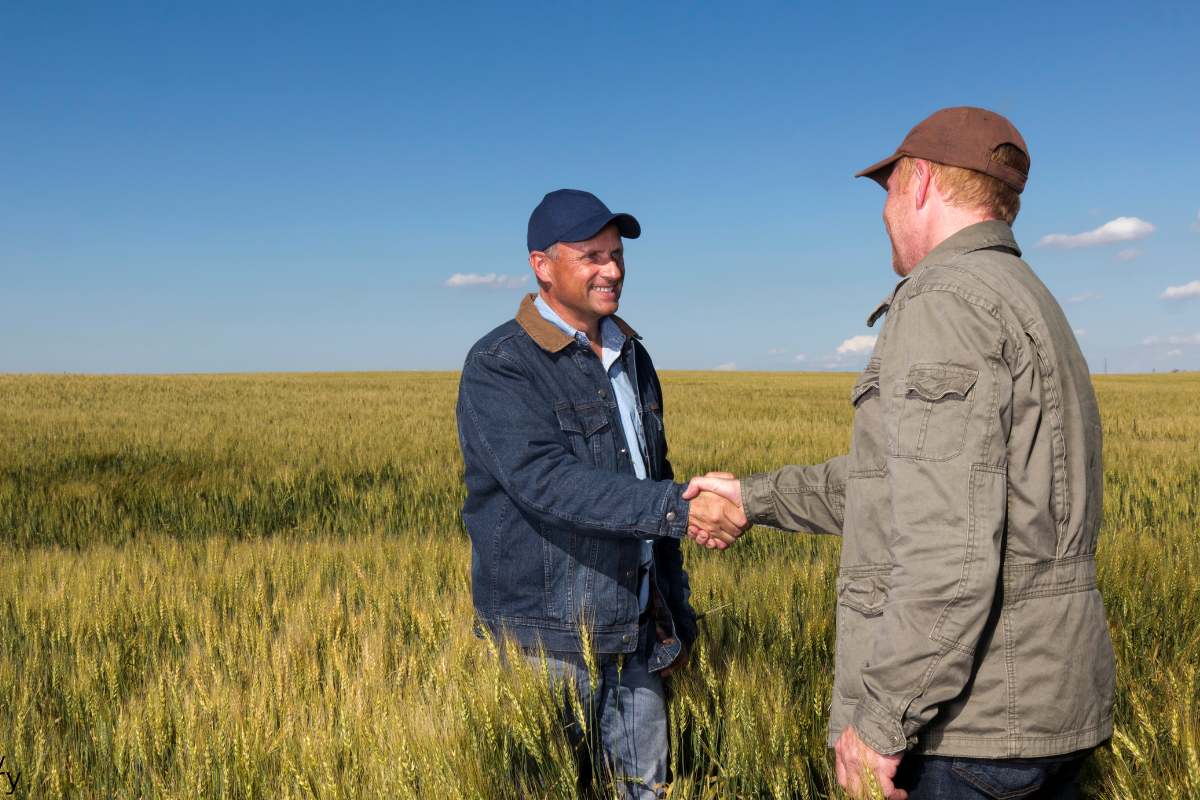
Are you ready for farm succession?
What motivates some farmers to make a succession plan while others don’t seem worried.
But how do you find them? And even if they seem bargain priced in this market, will the family be able to farm them and stay viable?
Ask some basic questions first
With so many more zeros at risk, it’s smarter than ever to heed all that advice about ensuring you’ve got the basics covered, especially if you lose out on a few auctions and your emotions threaten to take over. Everywhere we turned, realtors and farm advisors told us farmers looking to buy farmland need to establish some base criteria to help ensure any deal they sign is feasible and sustainable for their operation. And the same realtors told us they keep shouting that message because playing in this market can be suidical without it.

“In terms of the expected percentage of returns on the land, does it need to be annual cash returns, long-term asset appreciation, or a combination of both,” asks Alberta farm real estate agent and certified farm advisor Ben Van Dyk of Real Estate Centre. “Is the annual cash yield more important than annual appreciation? Does it need to be near where you live, or can it be anywhere in Canada?”
And where, geographically, should you look?
There are certain areas and locations that always outperform the market, VanDyk says, usually because of limited supply and great demand in those regions.
On the other hand, though, there are regions where prices seem more affordable, maybe even a bit more in touch with productive capacity. Farmers may be able to find a good deal. But it will only be a good deal if it aligns with your objectives. And you won’t get long to decide. Interest is heating up, and social media means sales prices become public knowledge faster than ever. Change comes fast.
And here’s another change. You can no longer expect regional bouts of bad weather to be your friend. Even with such a catastrophic, dry year, especially for farmers across the Prairies, most crop farms are financially healthy and huge numbers are still eager to expand.
In fact, the only safe bet this year is that there will always be competition. It’s the main feature of farmland markets all across the country. So, 10 years from now, will you say you did the right thing this winter?
Where are the deals in Ontario?
If you are looking at Ontario farmland, the best place to seek a good deal right now is in Eastern Ontario and the Ottawa Valley. “There is a lot of good land that’s still between $8,000 to $12,000 per acre in that region,” says Phil Spoelstra of Farm Ontario. “There are some beautiful farms out there. It’s good dairy country, the heat units are very good and we’re starting to see some of the larger investment firms buying up land in Eastern Ontario as well, which is always a good sign that they’re seeing potential there.”
There is also a bit of a trend northward in Ontario into Bruce County and towards New Liskeard in the Timiskaming District.
“Certainly, in dairy there’s some opportunities up there if you’re willing to go,” Spoelstra says. “Your cash flow is going to be a lot better because the quota price and land price are substantially lower, yet producers are getting paid the same for their milk, so there are some great opportunities if cash flow is what they are chasing.”
There is always opportunity in every market, says Spoelstra, but the key is to recognize it at the time, and buy it if you possibly can.
“If we look back even over the last 10 years, there’s plenty of examples where the conversations around the table were ‘everything is so expensive, how is this going to continue?’” he says. “It seemed like it was an overheated marketplace at the time, and when you talk to those people now who decided to move ahead and buy, they were incredible decisions. Even with high prices, the strongest areas of demand remain the strongest, and the people who continue to invest in these areas are continuing to be rewarded for making that extra stretch into the really high-quality farmland that is available in regions like Southwestern Ontario.”
Ask where the cheapest land is in Southwestern Ontario, though, and it’s a very different conversation than where is the best investment in Southwestern Ontario.
“Sometimes the cheapest land is the cheapest land for a reason, and sometimes the most expensive land is the most expensive for a reason, and sometimes it’s better to buy some of it, maybe a little bit less, but your investment will increase more just because of its quality and the demand for it,” Spoelstra says. “The one thing that’s rung true over the last 12 years that we’ve been selling farmland has been, if you can buy it, you should seriously consider it because it remains a hot commodity, and I don’t see that changing at any time.”
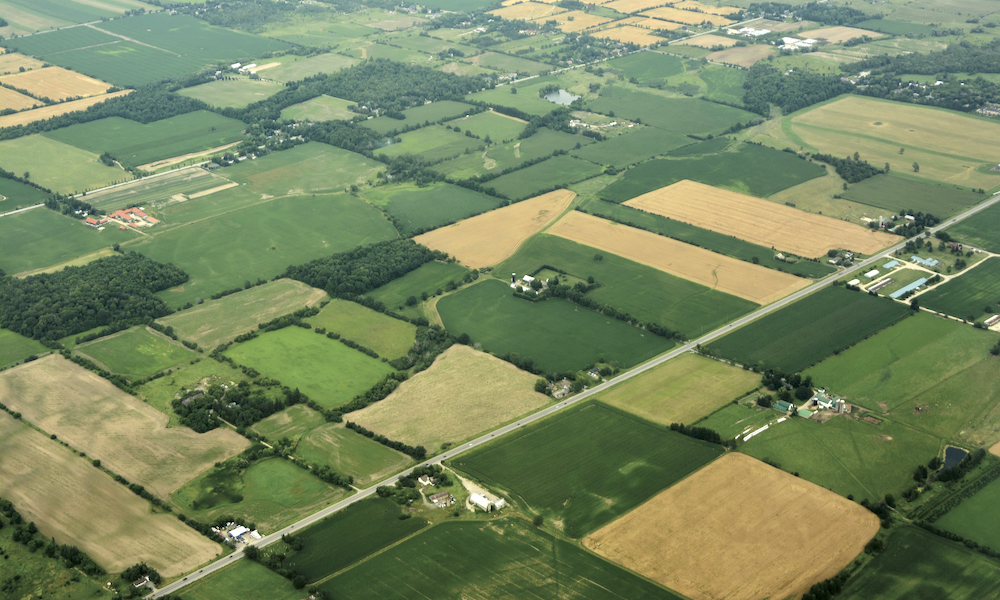
So, although bargain hunters are likely to be disappointed in Southwestern Ontario, they also won’t be as influenced by some of the negative factors, with recent weather conditions being a prime example, that can affect land prices in some other areas.
“When you get reports from other parts of the country where crops are tough and conditions are harsh, the Southwestern Ontario area is so consistent in comparison, and that is a big reason why so many have put down roots in Southern Ontario and decided this is where they want to farm,” Spoelstra says. “Access to market is huge as well.”
Meanwhile, Ontario land with development potential is earning astronomic sums, anywhere from $100,000 to $200,000 per acre, depending on location and the timeframe for development. That’s driving a definite trend towards farms selling off their land in these regions and purchasing cheaper land elsewhere — in some cases in other provinces.
Manitoba farmers roar back
As in most other provinces, it’s Manitoba farmers who are first and foremost looking for land to expand their operations. That wasn’t always the case, because for a while Manitoba had a lot of non-farming investors looking to purchase land that they could then rent. That’s slowed down largely because of how fast and steeply land prices have risen over the past few years.

“Rental rates have gone up, but they haven’t gone up to the percentage that land has, so most of those investors would want over a three to four per cent return and that’s very hard to do with some of the land prices we have now,” says Sheldon Froese, a real estate agent with Royal LePage Riverbend Realty Farm Division.
Possibly only areas like the Red River Valley around Winnipeg still offer any potential opportunity for speculative investment purchases.
“If you look at it from a straight cash rent return for a person from Winnipeg just wanting to buy a quarter of land to invest in, there’s lower-priced areas with good rental values, but for the expensive land near Winnipeg, the land appreciation will be higher in the future than it is in some of those other areas, so there is an advantage that way to buying land if you’re going to sell it someday,” Froese says.
Anyone expecting to find some inexpensive farmland in Manitoba will definitely have to stay away from anything close to Winnipeg or other populated areas, with likely the best bet being more remote areas of western and northwestern Manitoba. But even there, prices have been rising steadily largely due to farm expansion over the past seven or eight years.
“We’ve had very little influence from out of country, although we have seen families from other provinces wanting to move here and expand their farms into Manitoba, but possibly still having a land holding in Ontario, Alberta or British Columbia,” says Froese.
Saskatchewan
Farmland in Saskatchewan is still highly sought after because there is plenty of it available and it remains fairly affordable when compared to land in neighbouring provinces and globally.
“Over the past 10 years we have seen a strong agricultural community in Saskatchewan with low interest rates and good commodity prices,” says Tyler Badinski, a former farmer who founded Serca Realty with his brother Vince five years ago.
Since that time, farmland values, even in areas of the province that have traditionally offered some bargain prices, such as north of the Saskatchewan River, and in the southeast, central-east and central areas, have been steadily increasing.
“As it has become well known that there are still opportunities (to purchase some reasonably priced farmland) in Saskatchewan, that’s becoming a double-edged sword,” Badinski says. “As people are buying land that is not the highest production land, and while the premium land is creeping up, the land value in areas that may have traditionally been less desirable to live or farm are following at a percentage rate.”
As an example, an acre of farmland in the area around Melfort, which is home base for Badinski, is currently selling for around $3,700 an acre, while five years ago it was $2,000 to $2,200 an acre.
“Some land north of the Saskatchewan River produces as good as land around Melfort,” Badinski says. “If you compared a crop up there, on a normal year on a good quarter and a crop on a normal year here on a good quarter, you probably are going to combine within a few bushels of production with good practices and some moisture. But there is probably five days less opportunity to get the crop off in that area, so that has to factor that into the land value. Even so, in that area, land was selling for $1,500 to $1,900 an acre, and now we are doing deals over $2,500 an acre, so it’s all relative.”
Badinski says he is also seeing a lot more producers who want to free up some land equity to look farther afield.
“Producers who own large blocks of land that they purchased years ago for a low cost, and now it’s five times the value, are becoming more land-locked, and buying land around them is difficult and increasingly expensive, so they are saying, can you find us land elsewhere that will always have value and produces good crops,” he says. “They are starting to move some of their holdings to other areas.”
Most land transactions in Badinski’s experience are with producers, and interest from investment firms is rare, but there is definitely a little competition coming from out of province and overseas buyers.
“The other side of that is it’s a farming family coming from a farming area who can’t farm there anymore,” Badinski says. “That’s competition in a sense for the local family farm, but they are people who come here to farm, and want to be part of the community, and their kids go to school here, so it’s not pension funds or outside money just trying to make a return.”
That said, rental rates in Saskatchewan are likely behind many other areas, which Badinski believes is due to change soon.
“There are good opportunities now to make money with commodity prices and good production, so I think rent at some point will have to follow land values,” he says. “Producers can’t rent $3,000 an acre land for $70 an acre forever. I believe rental rates are going to creep up incrementally over the next five years.”
The Maritimes gets pricey
The Maritimes has traditionally been thought of as a place to find cheaper real estate, but if you ask Prince Edward Island farm real estate agent, Marianna Westerkamp, she doesn’t believe the words “bargain” and “farmland” go together in the Atlantic region.
That’s not surprising in an area of the country where the value of agricultural land soared in 2019 faster than anywhere else in Canada, driven largely by competition for scarce land resources among potato and dairy farmers wanting to expand their operations. The values cooled off somewhat in 2020, largely because most of the available land had already been snapped up, and a severe drought has had an impact on production, but anyone looking for cheap land anywhere in the Maritimes will be out of luck.
“It’s not like in the past when people would say land in New Brunswick is cheaper,” Westerkamp says. “I don’t agree. It all depends on where it is. Potato land at Grand Falls (about 315 km northwest of St. John) goes for the same value as the land here in Kensington (in the heart of P.E.I. potato country). Farmers are willing to farm anywhere as long as the soil is good; that’s what is important to them.”
Although Farm Credit Canada lists the average price per acre for land in different regions of all provinces in its annual Farmland Values Report, Westerkamp won’t even offer a figure for the average price of an acre of land in the Maritimes, because it varies so much by region, land type and type of operation. But land values, she says, will continue to rise, although in her experience, especially on P.E.I. where land is scarce, the majority of people buying farmland are still farmers looking to move or expand, not outside or offshore investors buying to speculate on the land value.
“Last year, I sold one small farm with about 70 acres to a private person who was planning to farm a bit on it, but as for the rest it was all land deals between farmers from out of province, whether it be from the European Union, Ontario, or other parts of Canada, as well as deals between local farmers,” Westerkamp says. “So, although I expect land prices to go up more, it has to stay sustainable because farmers are still buying land to farm it.”
Is farmland still a solid investment?
Farmers, though, have long memories, and many can remember a time decades ago when farmland values tanked, and the fallout from that can still make many reluctant to pull the trigger on high prices, fearing the rug could be pulled out from under them again. On the other side, many non-farming investors look at farmland as a rock-solid investment. So, what’s the truth?
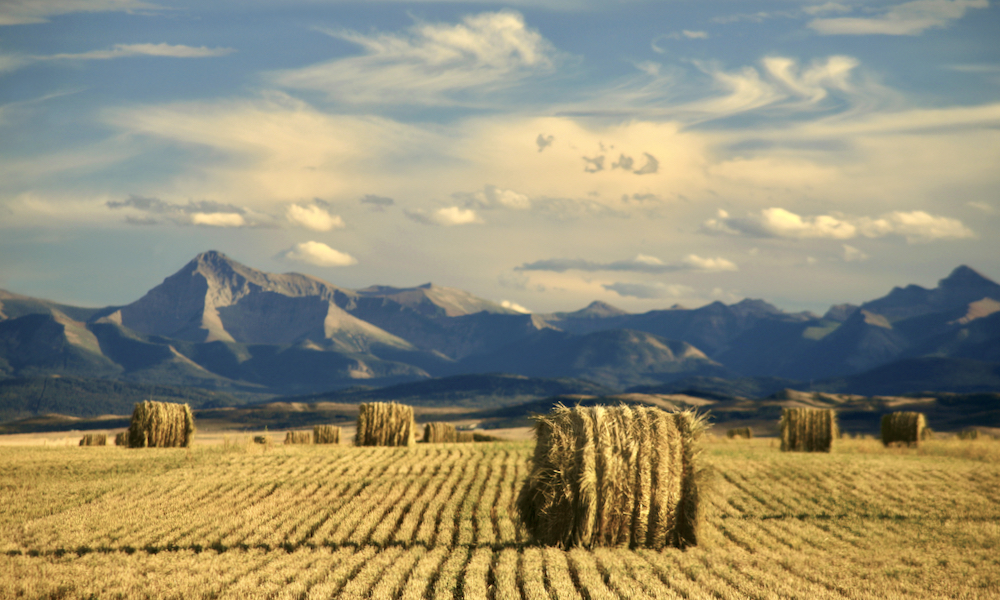
“Some of the factors that played into the decline of farmland prices back 20 or 30 years ago are factors that aren’t as much of a concern now, such as high interest rates,” Spoelstra says. “With more consistent interest rates moving forward, and increasing pressure on what amounts to a small amount of available land in Southwestern Ontario compared to certain parts of the U.S. and other places. With current immigration policies that will bring 400,000 immigrants per year into Canada for the next three years, I think demand is going to remain high, which would tell me that farmland is a sound investment. You’re buying something that produces something that we’re going to continue to always need, and that’s not a story of the last 20 years, that’s the story of human history. I don’t see that changing.”
The case for renting farmland
How do all these market factors play out for the small and medium-sized farm that wants to expand to accommodate more family members?
Ben Van Dyk of Real Estate Centre believes it can actually offer some opportunities for younger farmers who don’t have the capital to purchase all the land they need, especially since more retired farmers and more non-farming children are holding on to land that they don’t intend to farm themselves.
“The option of renting or leasing land can work for many younger farmers, and will provide the expansion their farms may need to survive without risking the assets they currently own,” Van Dyk says.
Banks typically look at the profitability index (PI) when looking at farmland investment, which is a ratio based on the value of future expected cash flow against the initial investment in the land, whether that is as a purchase or rent/lease.
“Banks typically want to see a range of six to seven per cent PI for land purchased and 2.5 to four per cent for land that is rented or leased,” Van Dyk says.
“So, renting or leasing might be a great option if you have limited equity or collateral, or if you want to grow fast to a larger-size operation because farmers can improve cash flow, whereas with a land purchase they decrease cash flow and increase appreciation long -term.”
Of course, renting isn’t easy either in today’s market. Even so, farm business advisors say, if you make the fundamental decision whether to grow by renting or through purchase, you’ll set yourself up with greater odds of success.
Where are land values heading in Alberta?
Alberta farm real estate agent and certified farm advisor Ben Van Dyk of Real Estate Centre predicts that Alberta will see a 25 to 30 per cent reduction in crop yields for 2021, and that will hold land price grains for irrigated land in southern Alberta to five to 15 per cent in the next year. In the dryland areas of south and central Alberta, including ranches and grazing lands, that have been severely affected by drought conditions over the past couple of seasons, values will be in the range of minus 10 to plus five per cent.
Van Dyk sees land prices in British Columbia rising between four to eight per cent in the year ahead based more on demand, because many agricultural regions in the province haven’t been as negatively affected by weather conditions through 2020 or 2021.
Besides the usual drivers of farmland value, however, weather issues also look likely to affect farmland values in the year ahead, and that will vary greatly depending on the province, region, locality and individual farm profitability.
With crop yields down in Saskatchewan by around 30 to 40 per cent in many areas due to dry conditions, land values look to vary from an eight per cent decrease to a 10 per cent increase depending on demand and profit margins achieved.
“Manitoba production has been greatly affected by weather conditions in 2021 and crop yields are down 30 to 40 per cent overall, so land price will vary greatly in certain areas and will be in the zero to 10 per cent increase range,” Van Dyk says.
– This article was originally published in the January 2022 issue of Country Guide.




